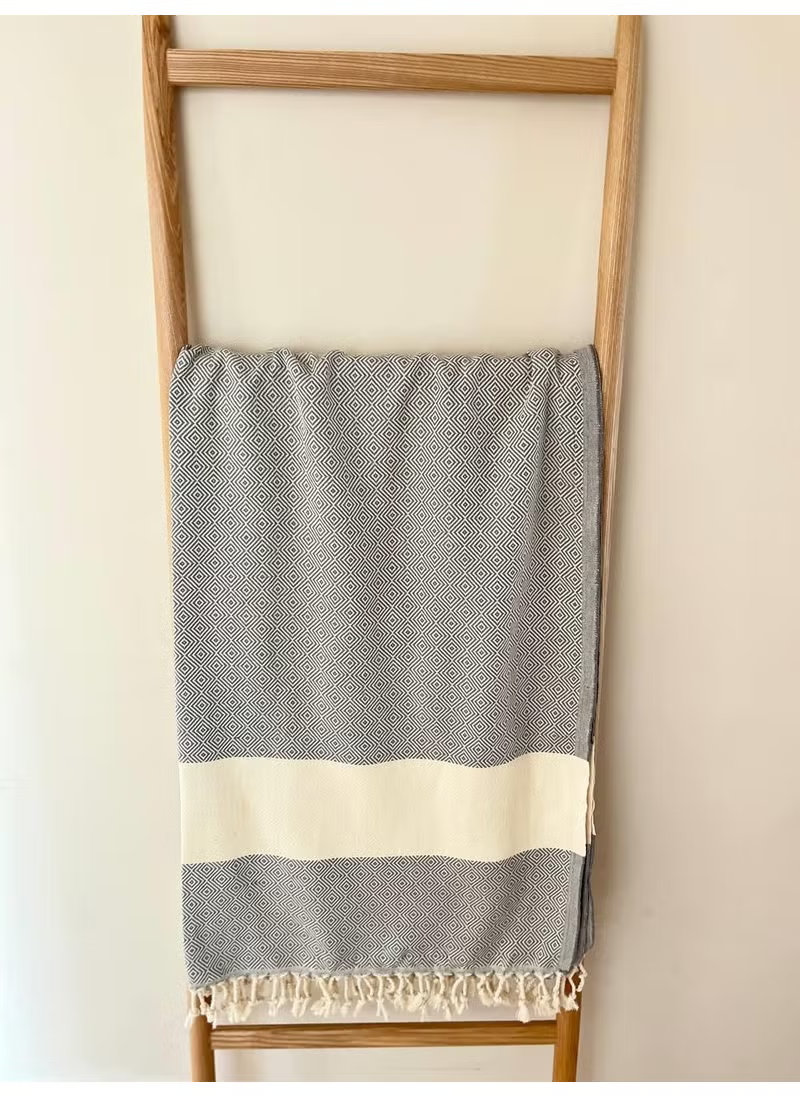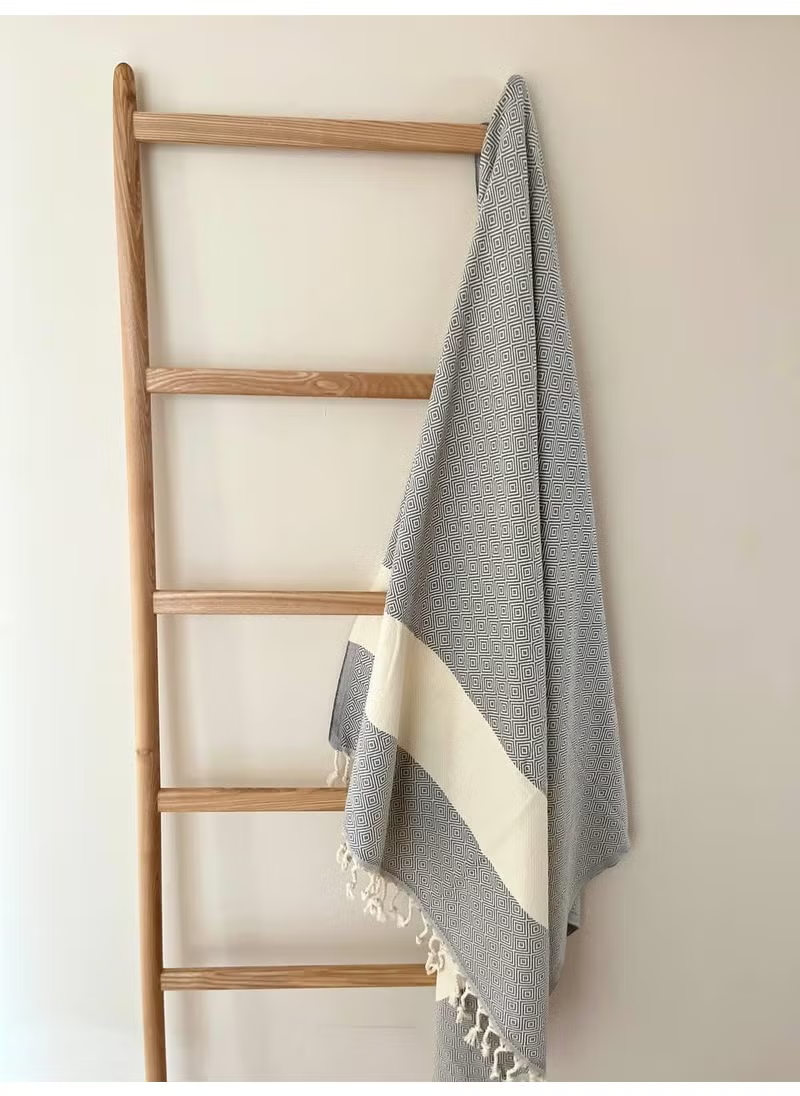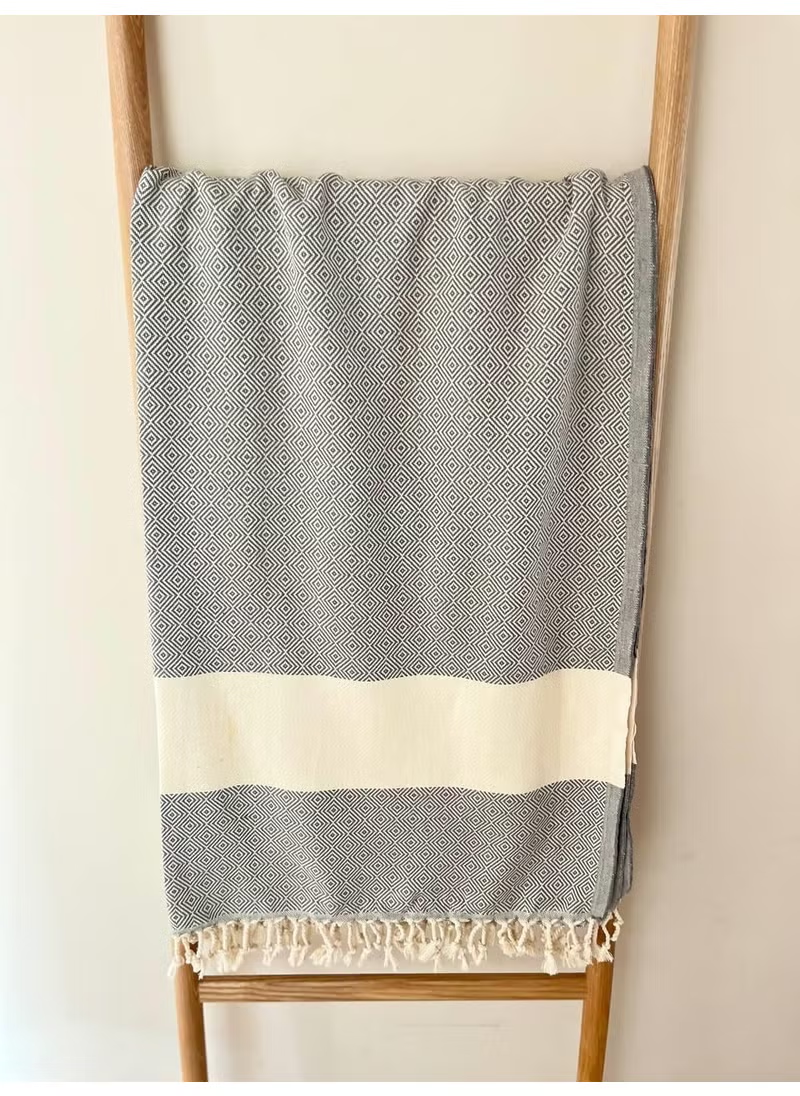| Color | Gray |
| Dimensions | 90 x 150 cm |
| Package Included | Pestemal |
| Yarn Type | Cotton |
Peshtemal is usually made of natural fibers such as cotton, bamboo or linen. Peshtemal is very useful due to its water absorbing properties and ability to dry quickly.
Features and Advantages
Material:
Lightness and Finesse:
Water Absorbency:
Quick Drying:
Various Usage Areas:
Aesthetics and Pattern Variety:
History and Cultural Significance
The origin of the peshtemal dates back to the Ottoman Empire. An indispensable part of Turkish bath culture, the peshtemal has been a symbol of cleanliness and purification throughout history. Today, it has adapted to modern life while preserving its traditional structure.
Maintenance and Cleaning
Washing:
Drying:
Ironing:
Peshtemals are usually made of natural fibers such as cotton, bamboo or linen. These materials are skin-friendly and do not cause allergic reactions.Peshtemals are thinner and lighter than traditional towels. This makes them easy to carry and store. They don't take up much space in your bag during holidays or sports activities.Despite its thin structure, it has a high water absorption capacity. This feature is very advantageous for use in baths and beaches.Its quick drying feature provides hygiene in humid environments and frequent use. Therefore, peshtemals do not create bad odor.Peshtemals can be used not only in the Turkish bath, but also on the beach, in the gym, during yoga sessions and at home. They can also be used as a shawl or pareo.It offers a wide range of patterns and colors, from traditional Turkish motifs to modern designs. This makes the peshtemal an aesthetic choice.Peshtemals can be machine or hand washed. It is generally recommended to wash at 30-40 degrees.Natural drying method is recommended. It can be dried in the dryer at low temperature.Cotton and linen towels can be ironed at low temperatures. However, ironing bamboo towels is not recommended.








